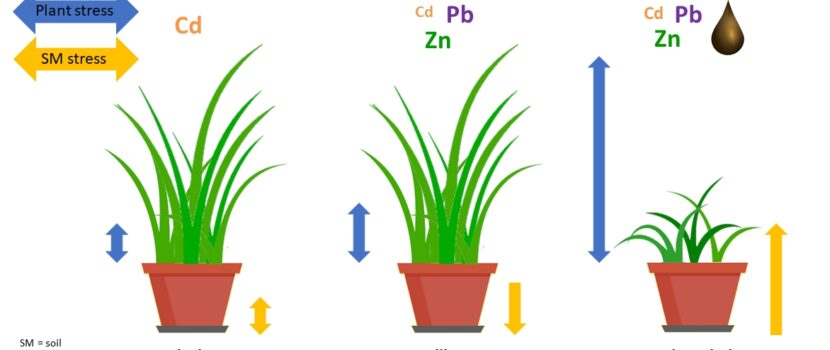
Stress Response of Miscanthus Plants and Soil Microbial Communities: A Case Study in Metals and Hydrocarbons Contaminated Soils
At which sites is it reasonable to grow the energy crop Giant Miscanthus? Under what conditions is the crop able to support important soil microorganisms? Those are two questions that we tried to answer in the very first pot experiments prepared at the Faculty of Environment, J. E. Purkyne University in Usti nad Labem.
We tested the cultivation of miscanthus plants in different types of soil: i) agricultural soil contaminated with cadmium; ii) soil from the former military area with increased content of cadmium, lead, and zinc; and iii) soil contaminated with petroleum substances and metals from the area of an oil refinery. We found out that miscanthus can grow in all variants. In agricultural and post-military soil the plant grew well. But a small amount of biomass was produced in soil contaminated by the petroleum industry that it doesn’t make sense to grow it in such conditions on a real scale. The high-stress load on the plant in petroleum contamination was also reflected in the values of chlorophyll fluorescence parameters, which indicate a disruption of the photosynthesis process. We obtained similar results in the study of the stress response of soil microorganisms. That is determined by measuring the composition of phospholipid fatty acids, which form the membranes of microorganisms and they respond to stress conditions. The stress response was low for the first two soil types. In petroleum contamination, however, the stress indicator values were the highest and they even increased during the experiment. However, the measured parameters in plants and microorganisms respond to various types of stress. So, we still have to investigate the specific cause of stress. In real contaminated soils, there are usually many different factors that need to be taken into account.
D. Nebeska, H. A. Malinska, A. Erol, V. Pidlisnyuk, P. Kuran, A. Medzova, M. Smaha, and J. Trogl, Stress response of Miscanthus plants and soil microbial communities: A case study in metals and hydrocarbons contaminated soils. Appl. Sci. 11 (2021) 1866.
Article link: https://www.mdpi.com/2076-3417/11/4/1866